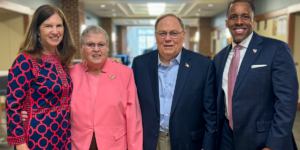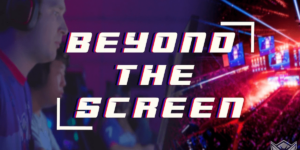The Shenandoah Conservatory Dance Ensemble presents the annual Fall Dance Concert from Friday, Nov. 14, through Sunday, Nov. 16, in the Ohrstrom-Bryant Theatre on the campus of Shenandoah University in Winchester, Virginia.
The performance features a range of works choreographed by dance faculty members Alan Arnett, M.F.A, Bob Boross, M.A., Tiffanie Carson, M.F.A., Ting-Yu Chen, M.F.A. and Maurice Fraga, M.F.A.; as well as a new piece titled “Echoes” by guest choreographers Katie Vickers and Albert Quesada. The performance also features lighting design by Rich Adams and costumes by Jennifer Flitton Adams.
“Diversity continues to be a hallmark of our dance concerts,” commented Chen, who is chair of Shenandoah’s dance department. “We offer the audience a wide variety of works ranging from the classical, to the abstract, to the provocative. I’m confident that each member of our audience will discover something to excite, delight, or challenge them.”
Performances are Friday, Nov. 14, and Saturday, Nov. 15, at 8 p.m. and Sunday, Nov. 16, at 2:30 p.m. Tickets are $15 for adults and $10 for students. Tickets may be purchased in advance by calling 540/665-4569.
The Fall Dance Concert program includes:
“The Joy of Spring” (choreographed by Bob Boross) is a journey through jazz music and dance, syncopation, and knowing that within us all resides a spring of joy and happiness just waiting to be activated. A quartet of dancers shares a communal expression of their love of jazz music, while permitting each dancer to show personal dance reactions to the bubbly be-bop music. As the song lyric says, “The Joy of Spring,” the fountain of pleasure, it’s deep inside you whether you’re diggin’ it or not, once you’re aware of this spring, you’ll know that it’s the greatest treasure you’ve got!
“Jazzy Party Time” (choreographed by Alan Arnett) features a cast of 15, led by a trio of male dancers (Michael Ross, Christopher Saunders and Deontay Gray). An answer to the question “what is jazz,” this piece showcases some unique quirks of the classic jazz style, performed at lightning speed to a grooving retro-big-band sound. Ladies in sequins and heels bring glam and pizazz to a dance that is sure to get your feet tapping.
“Pugnacious Obscurity” (choreographed by Tiffanie Carson): Dressed in all white, dancers with obscured vision are tested with confrontation. This visually and audibly stimulating piece will force you to see past the masks . . . what is behind the mask?
“Tethered to the Intangible” (choreographed by Maurice Fraga | costumes by Maurice Fraga): Audiences sometimes feel left out in the cold when watching dance, so how can choreographers make audiences feel part of the journey happening on stage? “Tethered to the Intangible” examines this idea and proposes a work where the line between performer and viewer becomes blurred.
“Quartetto” (choreographed by Maurice Fraga | costumes by Maurice Fraga): Abstract, lines, music. “Quartetto” sees choreographer Maurice Fraga explore the realm of contemporary ballet.
“Change the Constant” (choreographed by Ting-Yu Chen) features 15 dancers and four sections titled: (i) co-existence, (ii) co-dependent, (iii) conflict, and (iv) connectivity. The piece was inspired by the choreographer’s recent experience abroad, and by American media, which constantly reminds us that we are under the threats of terrorism, the Ebola epidemic, racial tension, political polarization, privacy invasion…etc.
Chen recalls, “while visiting my family in Taiwan this summer, I witnessed a massive gas explosion in the city. It was the embodiment of an end of the world horror. While taking my time to absorb the shock and the helplessness I felt as human being—vulnerable to man made and natural disasters—I noticed that grace always seemed near…in fact it co-existed with fear.”
“Change the Constant” is inspired by the idea of the ever-changing new normal that we live in. Everything seems to exist in dichotomy. We are more connected through technology, but also seem to be more emotionally isolated.
“Echoes” (choreographed by Katie Vickers & Albert Quesada): echo |ˈɛkəʊ| (pl.echoes): a sound or sounds caused by the reflection of sound waves from a surface back to the listener.
Vickers and Quesada choreograph not by giving set material, but by giving instructions to the students. Their only job is to listen. Listen. Every movement is created anew each time they dance. The music is the generator, encouraging group listening and improvised spatial patterns.
The starting point in making dances is often a musical composition. In “Echoes,” understanding the particularities of each sound track and the difference between a percussive and melodic instrument, is our main concern. We implement instructions (written scores) to move with the sound they hear. The instructions may be rhythmical, visceral or spatial.
Vickers and Quesada encourage dancers to create on stage, learn while performing and listen to move. We invite the audience to observe our musical dancers bath in clapping, foot stamps, percussions and disco music.




